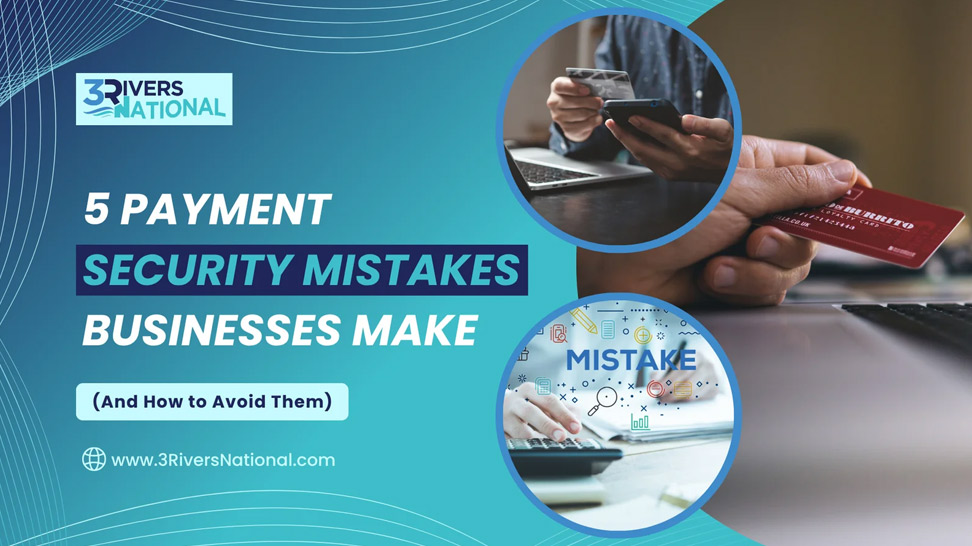Payment security isn’t just a tech problem—it’s a trust problem. In today’s digital-first world, customers want to know their personal and financial data is safe every time they swipe, tap, or click. Yet many small and mid-sized businesses unintentionally leave doors open to fraud, simply by not knowing what to look for.
Here are five common payment security mistakes businesses make—and how to stay protected.
1. Storing Card Data Without Tokenization or Encryption
Saving customer card numbers in your system might seem like a convenience, but it’s a major liability. If your system is breached and that raw data is exposed, you’re not just facing a financial loss—you’re risking your reputation.
The fix: Use tokenization and encryption. Tokenization replaces real card details with random strings of characters—useless to hackers. Encryption ensures any data transmitted is unreadable without the right key. Together, they offer powerful protection for both your customers and your business.
2. Skipping PCI Compliance
PCI DSS (Payment Card Industry Data Security Standard) compliance isn’t optional—it’s a requirement. Still, many small business owners don’t fully understand what it means or how to stay compliant.
The fix: Work with a payment provider that offers PCI-compliant tools and guidance. PCI compliance includes everything from secure networks to strong access controls, and it’s critical for avoiding costly fines or breaches.
3. Using Outdated Payment Terminals or Software
Technology moves fast, and that clunky old card reader or point-of-sale system from five years ago? It may no longer meet security standards, leaving you vulnerable to new types of attacks.
The fix: Regularly update your payment hardware and software. Look for systems with built-in security features like EMV chip readers, contactless (NFC) payments, and auto-updating software patches.
4. Overlooking Internal Threats
Not all security threats come from outside hackers. Sometimes, the risk is internal—untrained staff, weak passwords, or former employees with lingering access to payment systems.
The fix: Train your team on basic payment security protocols and implement user-level permissions. Require strong, regularly updated passwords and immediately revoke access when employees leave the company.
5. Assuming Online = Secure by Default
Just because you’re using a big-name e-commerce platform doesn’t mean your online store is automatically secure. Failing to use SSL certificates, secure checkout processes, or fraud detection tools puts your customers at risk.
The fix: Always use HTTPS for your website, offer secure payment gateways, and enable fraud monitoring. And double-check that saved card data is tokenized—not stored in your local systems.
Don’t Wait Until It’s Too Late
Cyber threats evolve daily—and unfortunately, many businesses don’t take action until after something goes wrong. But the good news? Modern tools make securing your payment process easier than ever.
At 3 Rivers National, we’re committed to protecting your business and your customers. All of our payment solutions come with built-in tokenization, end-to-end encryption, and full PCI compliance. Whether you’re accepting payments in-store, online, or on the go, our technology keeps sensitive data secure—and keeps you ahead of the curve.
Let’s Secure Your Payment Process
Stop guessing when it comes to payment security. Partner with a provider that makes protection simple, seamless, and smart.
Ready to upgrade your payment security? Get started with 3 Rivers National today.

